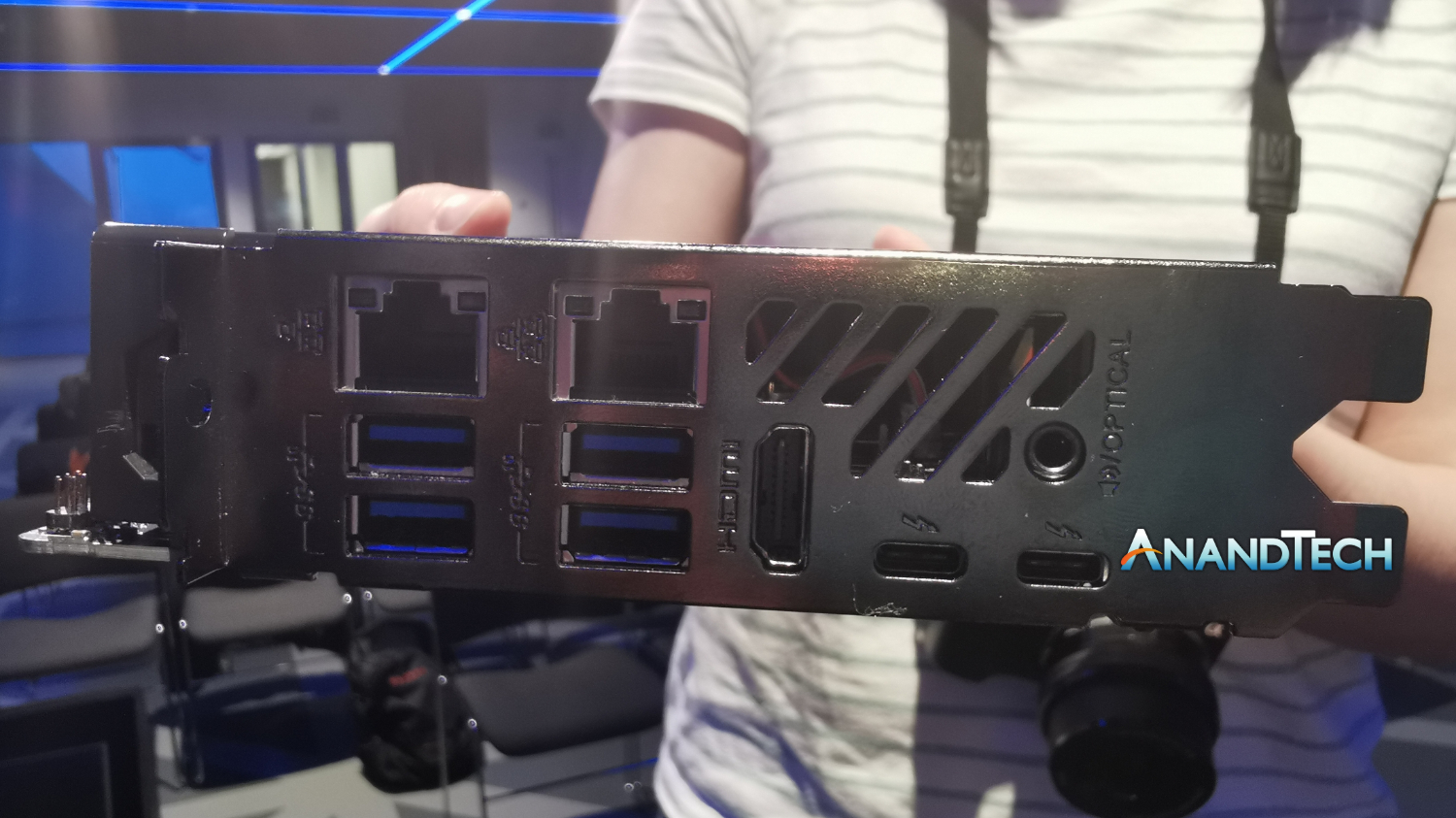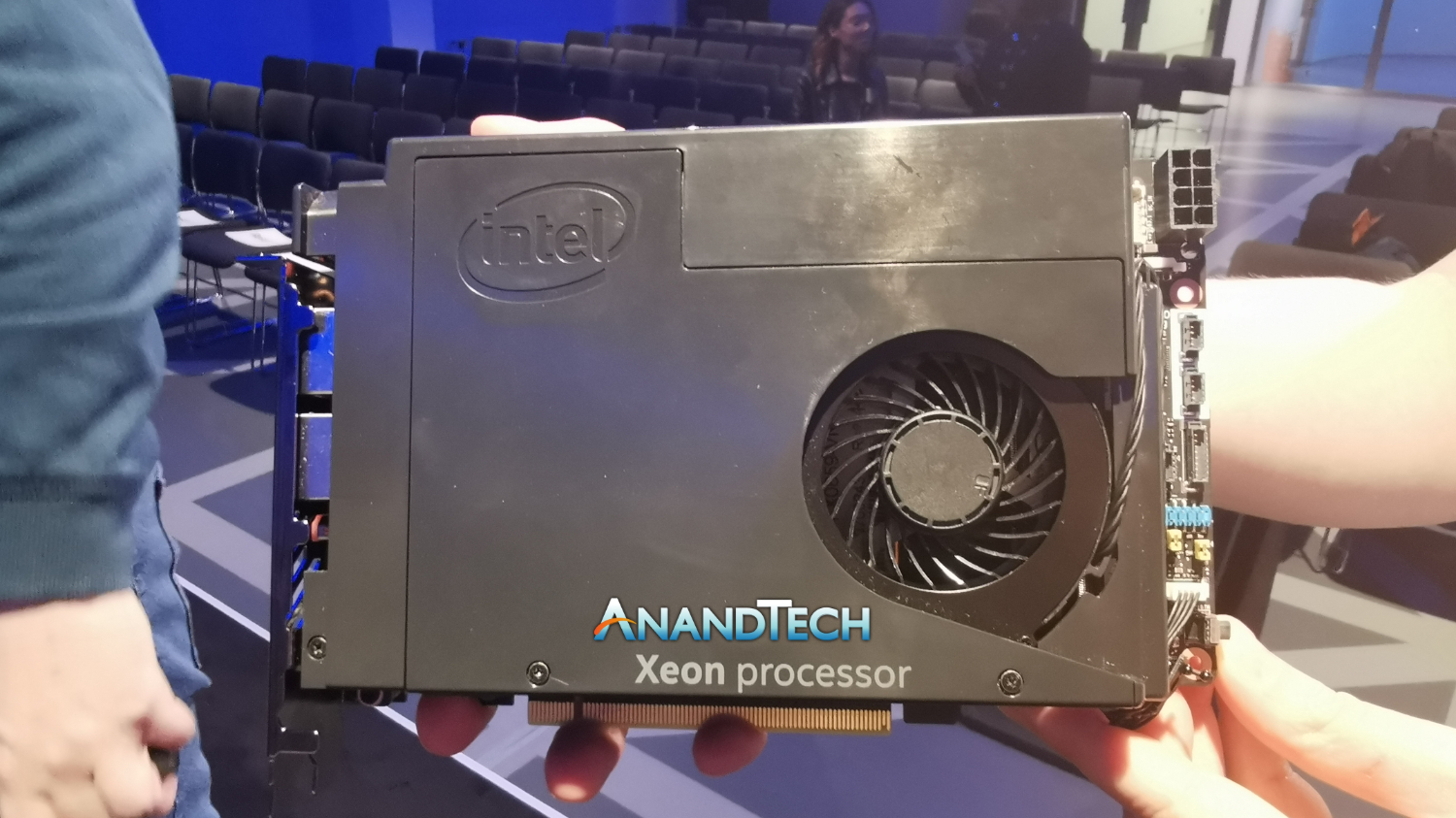The Element: Intel's Push For A Modular PC
Intel has shown off a new dual-slot PCIe card which the chipmaker has dubbed as 'The Element,' though the official product name is still up in the air. The Element houses its own processor, memory, storage, and other interfaces, such as Thunderbolt 3, Ethernet, Wi-Fi, and USB ports.
The Element comes out of Intel's Systems Product Group, the same folks behind the NUC (Next Unit of Computing) and NUC Compute Element. As reported by AnandTech, Intel demoed a working prototype of The Element at an event held in London yesterday. The Element resides inside a dual-slot enclosure with unknown dimensions that resemble a graphics card.
Intel developed The Element to slide into a backplane with PCIe slots where it can mingle with other graphics cards or accelerators. The general idea is that you can upgrade your system by hot-swapping out a single module rather than removing a bunch of components. Unfortunately, Intel's concept still has you removing the SSD yourself.
The Element prototype employs an unidentified Intel BGA Xeon processor and has two SO-DIMM LPDDR4 memory slots and M.2 slots, which are user-accessible. Some onboard controllers take care of wireless networking, display, and connectivity duties. The rear panel exposes two Ethernet ports, four USB 3.0 ports, two Thunderbolt 3 ports, and an HDMI port that draws its output from the Xeon chip's integrated graphics. A single cooling fan provides The Element with active cooling. We're looking at a proof of concept design, so the final product will likely vary greatly from the prototype.
The Element would communicate with the backplane through a standard PCIe x16 interface. It probably adheres to the PCIe 3.0 standard, but Intel didn't confirm it. The chipmaker did admit that it has established a roadmap for The Element. Therefore, it's safe to assume that the device could eventually transition to the newer PCIe 4.0 interface, or even PCIe 5.0 in future generations.
In terms of power consumption, the Element can draw up to 225W in total (75W from the PCIe slot and 150W from the 8-pin PCIe power connector). However, it's important to highlight that 225W is distributed between the processor, memory, and storage devices. Depending on the configuration, there might not be enough leftover power for the processor, which could seriously limit the number of processor options on The Element. Luckily, the device is still in the prototype phase, so there's still enough time and room for improvements to the design.
Intel doesn't think partners can produce The Element on their own. Therefore, there won't be any AIB (add-in board) partners for The Element, so don't expect to see any aftermarket models with extravagant designs or crazy RGB lighting. Essentially, The Element is aimed at OEMs for them to use inside their pre-built systems. Nonetheless, Intel will allow OEMs to play with the design and create their own backplanes.
Get Tom's Hardware's best news and in-depth reviews, straight to your inbox.
Surprising as it may seem, The Element is positioned in the same category of the NUC, meaning there's a chance the device will make its way to the consumer market. However, we're a bit skeptical that the device finds itself outside the professional market, considering that it would probably have an eye-watering price tag. This is enterprise-grade technology, after all.
Intel is optimistic that it will get The Element, or whatever the chipmaker decides to call it, to OEMs in the first quarter of 2020. There is no word on pricing or available configurations yet.

Zhiye Liu is a news editor, memory reviewer, and SSD tester at Tom’s Hardware. Although he loves everything that’s hardware, he has a soft spot for CPUs, GPUs, and RAM.
-
bit_user Replythe Element can draw up to 225W in total (75W from the PCIe slot and 150W from the 8-pin PCIe power connector). However, it's important to highlight that 225W is distributed between the processor, memory, and storage devices. Depending on the configuration, there might not be enough leftover power for the processor, which could seriously limit the number of processor options on The Element.
If it could take in much more power, I think that fan would surely be a bottleneck for dissipating it.
skeptical that the device finds itself outside the professional market, considering that it would probably have an eye-watering price tag. This is enterprise-grade technology, after all.
I wouldn't assume it's enterprise-grade, just because it has a Xeon CPU. My guess is that it's aimed more at commercial-sector applications where compute requirements are rather high and environmental factors aren't too harsh. Otherwise, you'd use industrial PCs or embedded SBCs.
For enterprise server applications, there have long been blade servers that essentially do the same thing, only denser.
And for enterprise desktops, I think those are all migrating towards laptops and NUCs or mini-PCs. I question whether this would be a proper substitute for anyone needing a proper workstation. -
bigdragon Intel's Element project appears to be trying to reinvent the blade array. I'm not sure what they're thinking here. Probably something focused on AI.Reply
I'd really like to see computers get smaller. When i saw "modular" in the title I got excited. Intel's NUC is a great form factor hampered by its graphics capabilities. I'd like to see Intel solve the graphics issue. There has got to be a solution to miniaturize the traditional ATX motherboard and dual-slot GPU. -
bit_user Reply
No, not that. AI is way beyond general-purpose CPUs, and even moving past GPUs to purpose-built AI chips. And those chips can go on a PCIe card and slot into a normal server - in no way do they justify something like this.bigdragon said:I'm not sure what they're thinking here. Probably something focused on AI.
Gen11 graphics scales NUCs from (I think) a max of 48 EUs, previously, to (should be) 64 EUs. Gen12 will be yet more efficient, as well.bigdragon said:I'd really like to see computers get smaller. When i saw "modular" in the title I got excited. Intel's NUC is a great form factor hampered by its graphics capabilities. I'd like to see Intel solve the graphics issue. There has got to be a solution to miniaturize the traditional ATX motherboard and dual-slot GPU.
In the meantime, Intel had actually released a NUC with a 24-CU Vega (KabyG), but those were recently discontinued.
Plus, there's this:
https://www.tomshardware.com/news/intel-quartz-canyon-nuc-xeon-e,40124.html -
R_1 a PC is already modular. built to standards for that reason. this will not address form factor limits nor cross brand compatibility so I do not see the usefulness of this save to employ less skilled workers to maintain more wasteful systems.Reply
from the daughterboard of old to the P3 on a card to this intel loves their SECCs -
bit_user Reply
Good call!R_1 said:from the daughterboard of old to the P3 on a card to this intel loves their SECCs
Link: https://en.wikipedia.org/wiki/Slot_1 -
iam2thecrowe Aren't computers already "modular" As bigdragon said, looks no different to IMB Blade server concept.Reply


